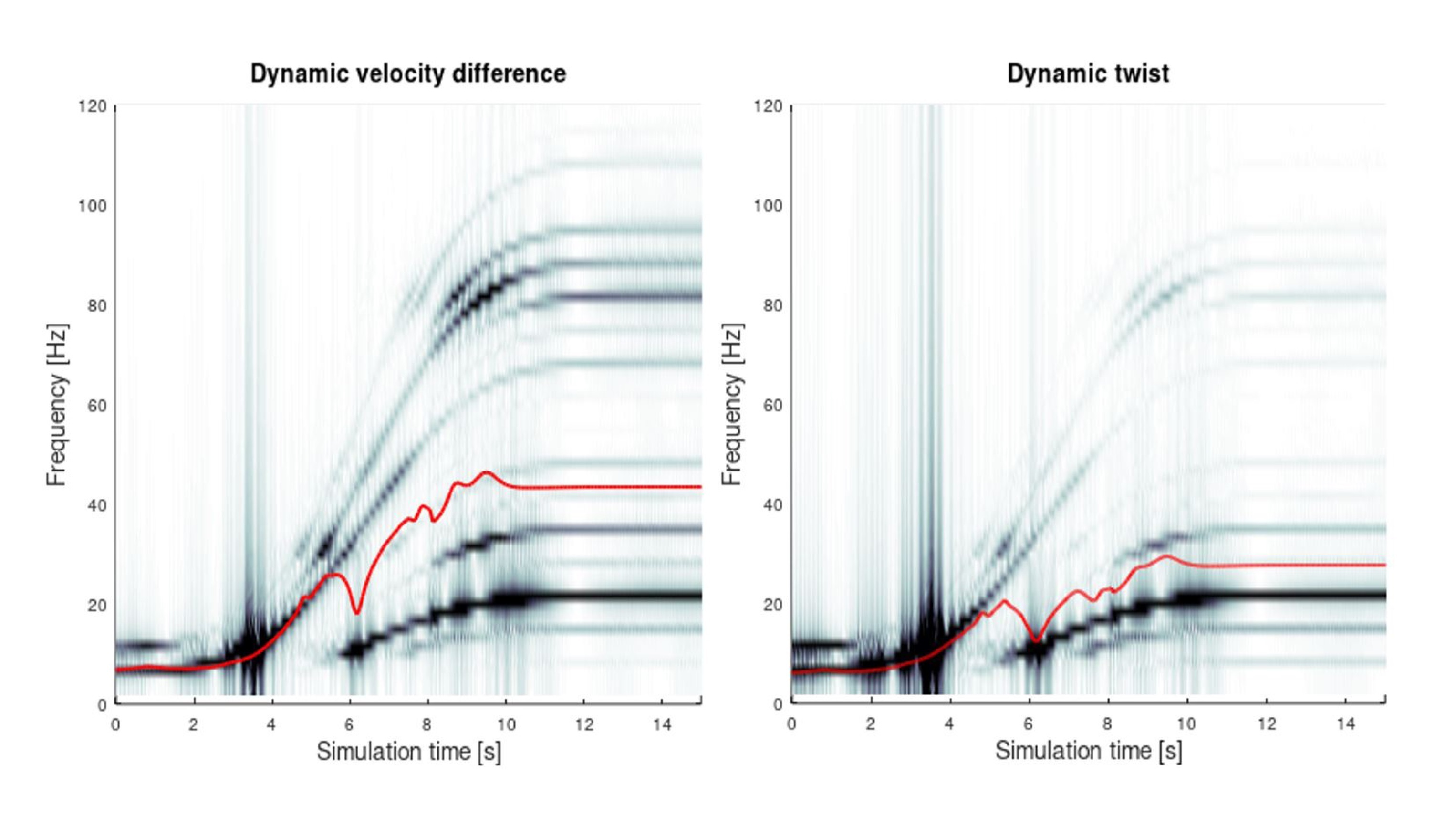SHARE ON:
Link copied!
The simulations focused on the question of how classic steel spring couplings with frequency-based stiffness and damping definitions can be transferred to the time domain. Therefore, an adaptive main frequency updating algorithm was presented in detail. For this algorithm, a continuous spectral analysis of the dynamic velocity difference and the dynamic twist, see figure below, is used:
Frequencies with high amplitudes are marked by dark areas and low amplitudes are marked by light colors. The red line marks the identified main frequency over time for relative damping (left) and stiffness (right).
The presentation highlighted how transient torsional vibration simulations can be beneficial to avoid coupling oversizing while ensuring safe operation under all operating conditions and applications. As the latest development for torsional vibration monitoring, a new data processing infrastructure was presented, which can process long-term measurements. If you would like to learn more about “Recent developments for simulations and measurements of torsional elastic steel spring couplings”, you can find the recorded video on our Geislinger YouTube Channel.
Take a look at Review 2022 for more information about the event. Due to the great success, Geislinger has already decided to be the main sponsor of the next Torsional Vibration Symposium, May 14-16, 2025. Feel free to save the date to meet us there.
